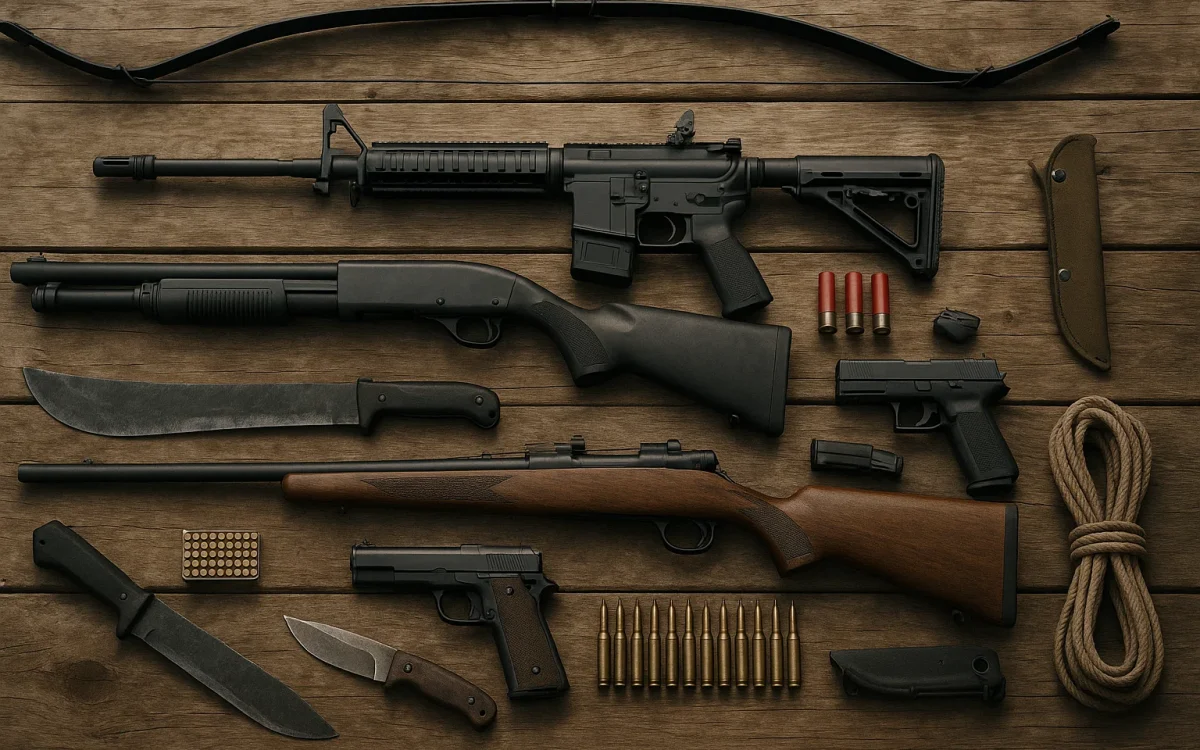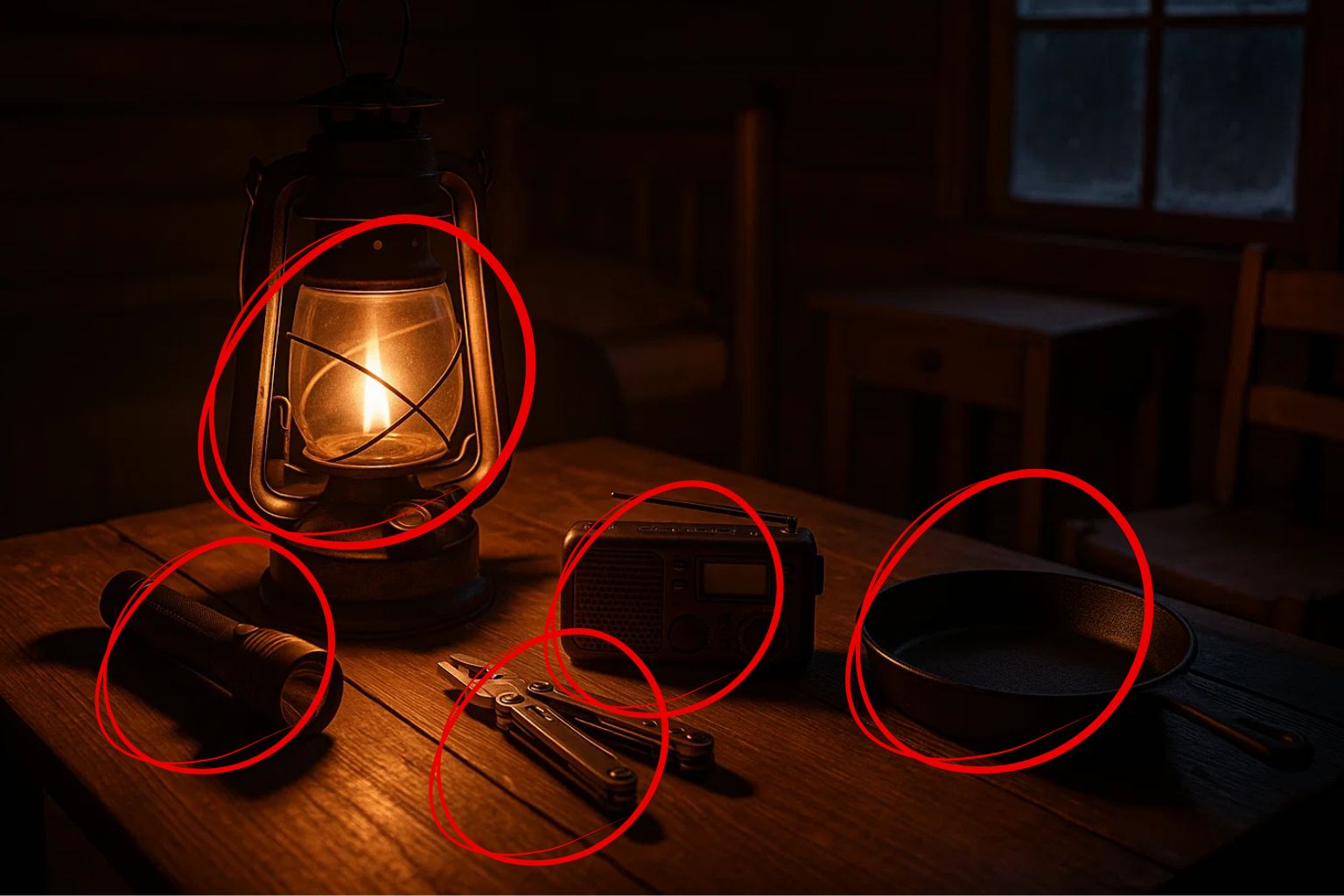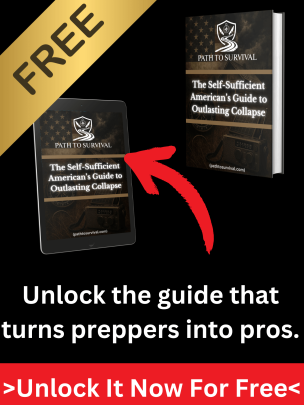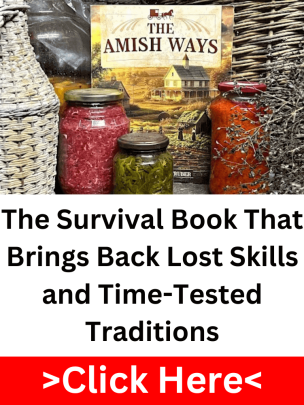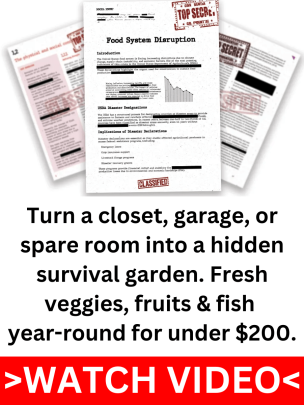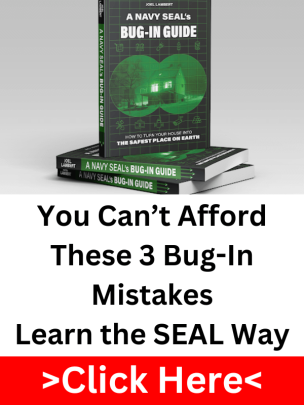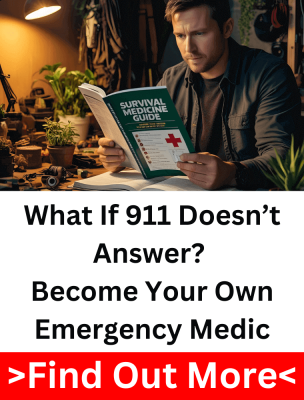Most people imagine survival like a Hollywood movie, endless ammo, perfect accuracy, and guns that never jam. Real preppers know it doesn’t work that way. When systems fail, you don’t need the “coolest” weapon. You need the one that actually keeps you alive.
That’s why weapon choice matters. Every option has trade-offs: noise, range, ammo, weight, reliability, and how it performs under real pressure.
In this breakdown, we’re looking at the weapons preppers actually rely on. Firearms. Silent weapons. Blades. What works, what doesn’t, and when each one makes sense in a real collapse scenario.
How Preppers Choose Weapons
Preppers don’t pick weapons based on hype. They look at what actually works in their environment and what they can realistically maintain during a crisis.
Range vs. environment:
Different situations call for different ranges. Rural preppers may need something that reaches out farther. Urban or indoor defense is a close-range game.
Noise and attention risk:
Guns make noise, and noise draws people. In a collapse, attracting the wrong attention can be worse than the threat itself. Sometimes being quiet matters more than raw power.
Ammo availability:
A weapon is useless if you can’t feed it. Preppers think about common calibers, storage life, and how much they can realistically carry.
Reliability and maintenance:
Simple usually wins. Fewer moving parts means fewer problems when cleaning supplies, spare parts, or gunsmiths aren’t around.
Hunting vs. defense balance:
Some weapons excel at stopping threats. Others put food on the table. A smart prepper chooses based on what they expect to face most.
Skill level required:
A weapon should match the user. If it’s too hard to control, too technical, or too slow to learn, it becomes a liability when things get serious.
12-Gauge Shotgun

The 12-gauge is one of the most trusted weapons in survival planning. It’s simple, proven, and hits harder at close range than almost anything else the average person can own.
It’s a defensive powerhouse. For home protection, property defense, and short-range threats, few weapons perform better.
Strengths:
- Massive stopping power at close range
- Very easy to use and aim under stress
- Extremely reliable, especially pump-actions
- Versatile ammo: birdshot, buckshot, slugs
Limitations:
- Short effective range
- Heavy recoil for smaller shooters
- Ammo is bulky and heavy to carry
- Slow reloads compared to rifles
When a shotgun is the best choice:
- Home defense and indoor protection
- Protecting a homestead at short distances
- Situations where you need guaranteed stopping power
- When simplicity matters more than speed or range
When it becomes a disadvantage:
- Open areas where threats may be farther away
- Bug-out situations where weight matters
- Repeated shots under stress (recoil fatigue)
- Any scenario requiring quiet or stealth
AR-15 / Semi-Auto Rifle

The AR-15 is the closest thing to a true “multi-role” survival weapon. It’s light, accurate, and adaptable, making it a go-to choice for many preppers who want one rifle that can do almost everything.
Why it’s the multi-role weapon:
It handles defense, hunting, and perimeter control without being too heavy or too hard to manage. You can customize it, repair it, and run it with ease if you put in basic practice.
Strengths:
- Accurate at medium range
- Low recoil, easy for most people to control
- High magazine capacity for multiple threats
- Lightweight ammo compared to shotgun shells
- Huge parts and accessory availability
Weaknesses:
- Loud, zero chance of staying hidden
- More moving parts than a shotgun
- Depends on proper cleaning and lubrication
- Some models can be picky about ammo
Best survival scenarios for the AR:
- Perimeter defense on rural property
- Medium-range threats where accuracy matters
- Protecting livestock or resources from predators
- Hunting deer-sized game in open areas
- Situations where multiple threats are possible
Times when it’s not ideal:
- Tight indoor spaces where maneuvering matters
- Long-term neglect without cleaning supplies
- When stealth is required
- When ammo resupply is limited to odd calibers
.22LR Survival Rifle

The .22LR survival rifle is one of the most underrated weapons in the prepper world. It’s not flashy and it’s not a powerhouse, but for long-term survival, it delivers value that bigger calibers simply can’t match.
Why preppers love it for long-term survival:
It’s quiet, easy to shoot, and perfect for putting food on the table without burning through valuable resources. When collapse lasts longer than expected, the .22 becomes a workhorse.
Strengths:
- Very quiet compared to larger firearms
- Ammo is extremely lightweight, you can carry hundreds of rounds
- Excellent for small-game hunting (rabbits, squirrels, birds)
- Zero recoil makes it ideal for beginners
- Cheap to stockpile and reliable when stored properly
Weaknesses:
- Limited stopping power on human threats
- Not suitable for large game
- Requires good shot placement for clean kills
Situations where .22 outperforms larger calibers:
- Long-term food gathering where meat conservation matters
- Staying discreet without giving away your position
- Bug-out bags where weight is critical
- Training new shooters or family members
- Situations where every ounce of ammo counts
Bow / Crossbow
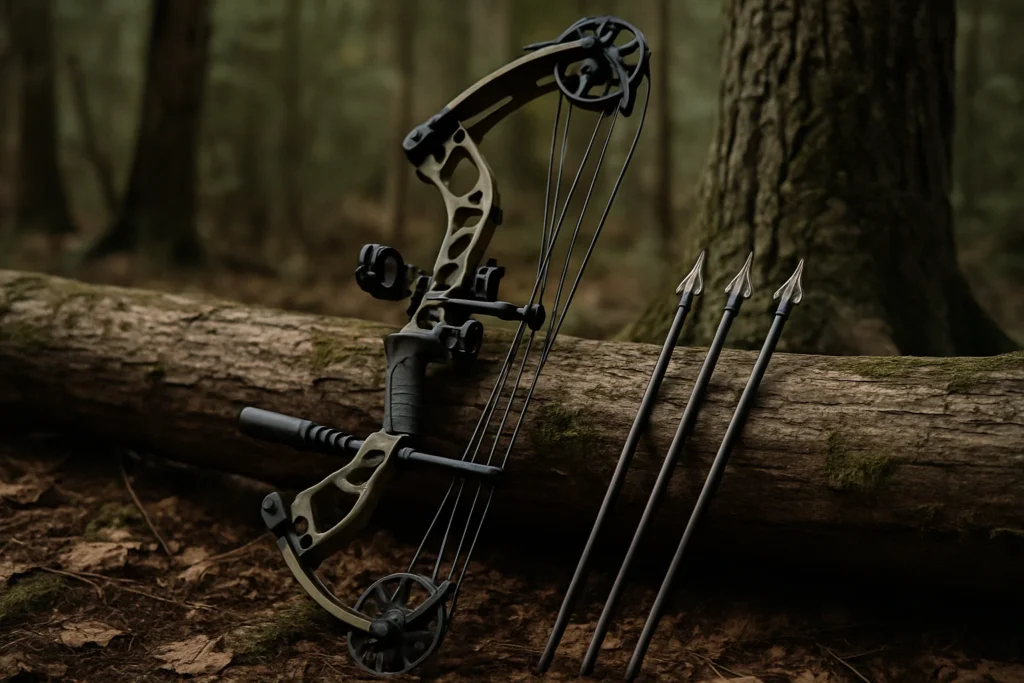
Bows and crossbows don’t get as much attention as firearms, but in a long-term collapse, they offer advantages no gun can match. When noise becomes a liability, a silent shot is worth its weight in gold.
Stealth and reusable ammo advantages:
A bow lets you hunt or defend without broadcasting your location. Arrows can be recovered, repaired, and reused, something impossible with bullets. That makes bows valuable when supply chains disappear.
Strengths:
- Completely silent, perfect for stealth
- Arrows are reusable and easy to craft or repair
- Excellent for hunting without alerting everyone nearby
- No powder, primers, or factory ammo needed
- Legal in most areas and less restricted than firearms
Weaknesses:
- Requires real practice to shoot accurately
- Slower follow-up shots compared to any firearm
- Bulky to carry and harder to use in tight spaces
- Limited penetration on heavy bone without proper broadheads
When bow beats guns:
- Hunting small or medium game without scaring everything off
- Operating in areas where gunfire attracts danger
- Long-term collapse where ammo conservation is critical
- Situations where legality or noise restrictions matter
When bow is a bad choice:
- Defense against multiple threats
- Close-quarters situations
- Adverse weather that affects string performance
- When you need immediate, repeatable firepower
Fixed-Blade Knife
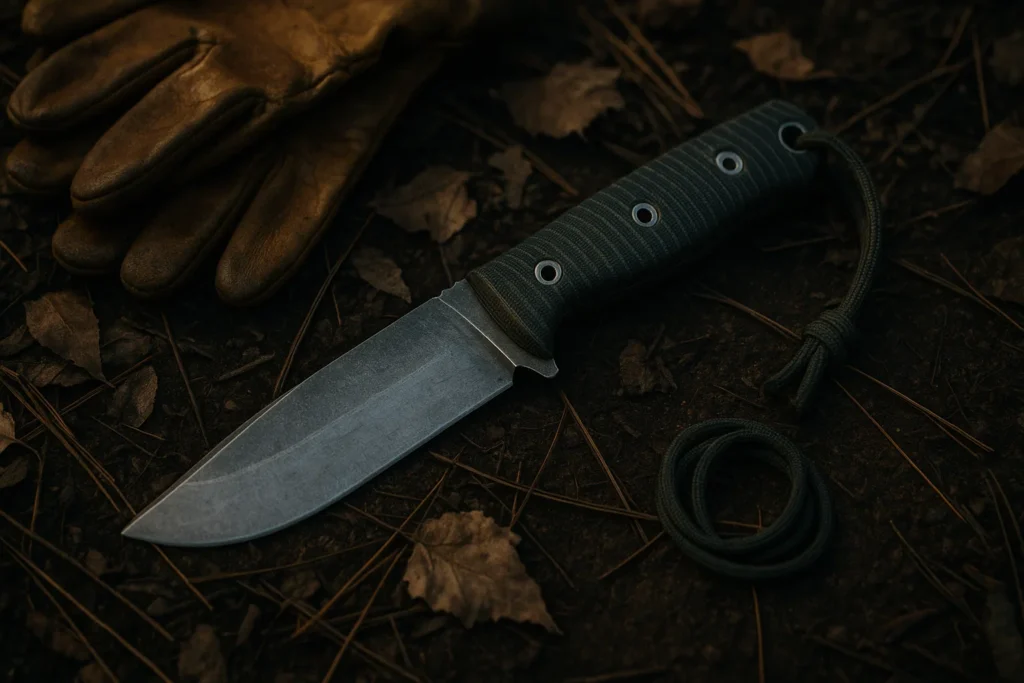
A fixed-blade knife isn’t just a tool, it’s the one item you’ll always have on you when everything else is out of reach. In survival, that alone makes it a legitimate weapon.
Knife as a weapon, not just a tool:
Knives aren’t ideal for offense, but they matter when you’re out of options. If a threat gets too close or you lose access to your main weapon, a solid knife becomes your last line of defense.
Strengths:
- Always accessible and quick to deploy
- Extremely dependable, no moving parts, no ammo
- Effective in tight, close-quarters situations
- Works even when firearms fail, jam, or run dry
Weaknesses:
- Requires extreme proximity to the threat
- High risk for the user
- Limited range and stopping power
- Skill and control matter more than strength
When a knife realistically matters in survival defense:
- When you’re grabbed or rushed at close range
- When your firearm malfunctions or runs empty
- During ground-level struggles where reach doesn’t matter
- As a fast backup when you have no time to reload
- When carrying a gun isn’t possible or allowed
Machete
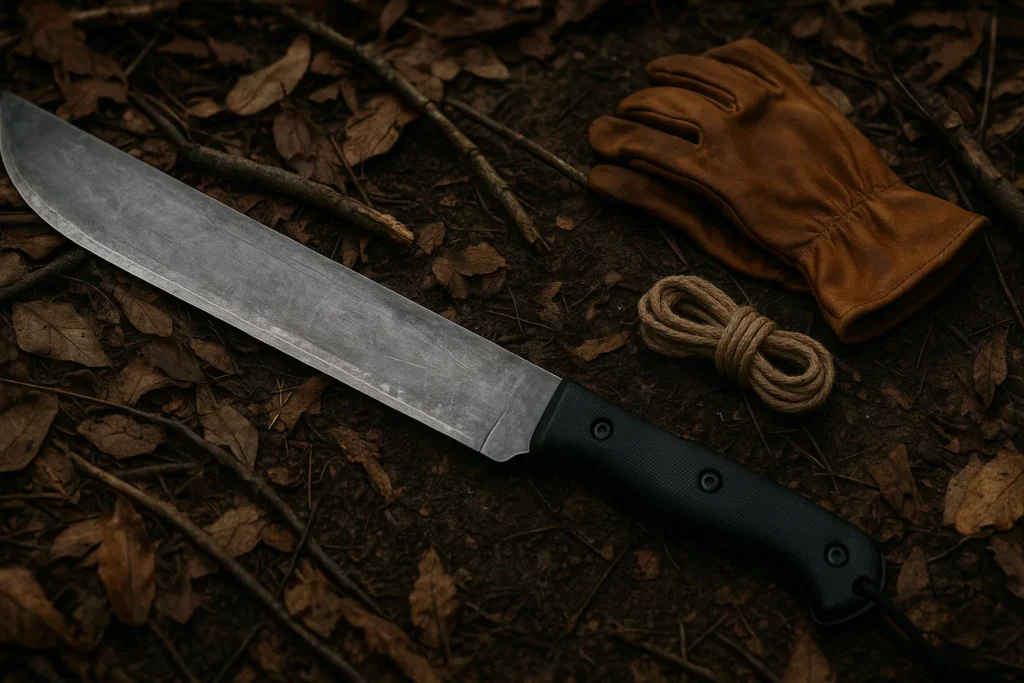
A machete is more than a brush tool. In a survival situation, it becomes a serious weapon thanks to its reach, cutting power, and sheer intimidation factor. It’s simple, durable, and doesn’t rely on anything but your own strength.
Why machetes are considered weapons in survival:
They bridge the gap between a knife and a hatchet. A machete can clear land, chop wood, and, if needed, deliver powerful defensive strikes that a smaller blade simply can’t match.
Strengths:
- Longer reach than a knife
- Intimidating presence that can stop a threat before contact
- Heavy, destructive cutting power
- No ammo, no parts, no maintenance hassles
- Works reliably in close-quarters situations
Weaknesses:
- Only effective at close range
- Requires strength and control to use safely
- Can be awkward in tight or indoor spaces
- Not ideal against multiple or armed attackers
When a machete becomes a practical weapon option:
- When you need reach but don’t have a firearm
- During close-quarters defense on a homestead or trail
- When traveling through dense terrain where it’s already in use
- If stealth is required and noise must stay at zero
- When your primary weapon fails or isn’t available
Pistol (Handgun)
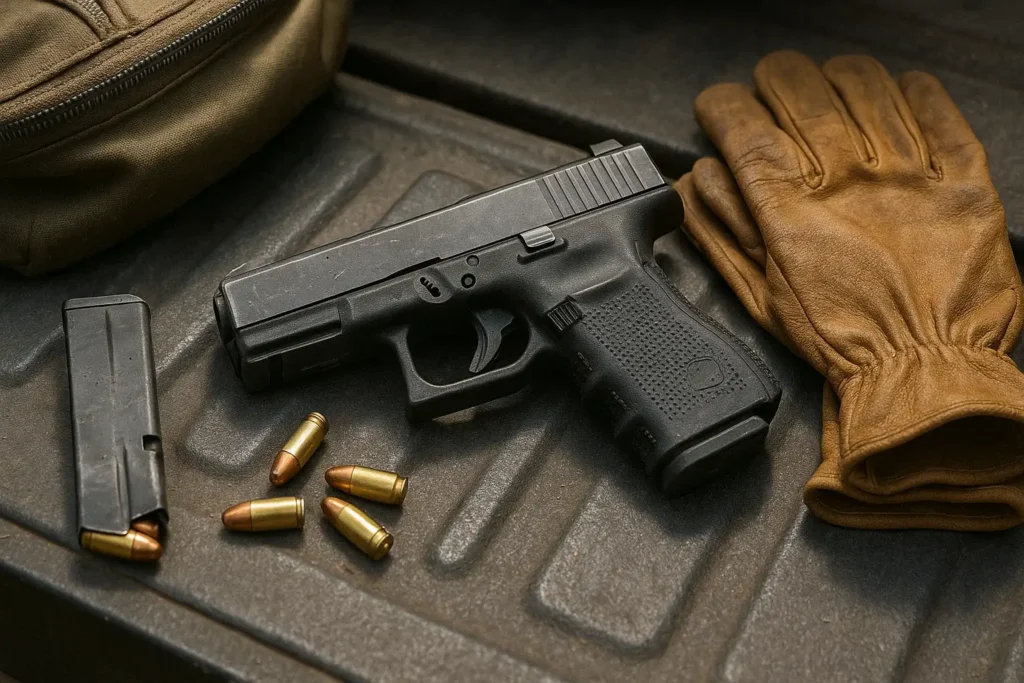
Most preppers carry a pistol, not because it’s the strongest weapon, but because it’s the one you can keep on you at all times. It’s portable, fast to draw, and easy to conceal, advantages that matter when you can’t walk around with a rifle.
Why most preppers carry one:
A pistol is the ultimate backup gun. It’s there when your hands are full, when you’re on the move, or when grabbing a long gun isn’t realistic. Convenience and accessibility are its biggest strengths.
Strengths:
- Extremely portable and easy to carry daily
- Fast access during sudden threats
- Concealable for low-profile movement
- Wide ammo availability (especially 9mm)
- Simple manual of arms once you’re trained
Weaknesses:
- Short effective range
- Harder to shoot accurately under stress
- Recoil can disrupt follow-up shots, especially for new shooters
- Limited stopping power compared to rifles and shotguns
- Dependent on solid training to use well
Best survival situations for pistol use:
- Last-resort defense when a long gun isn’t reachable
- Close-range encounters in tight spaces
- Everyday carry during travel, scouting, or chores
- Backup weapon in case your primary firearm malfunctions
- Low-profile movement where a rifle draws attention

Situational Winners
Best for home defense:
12-Gauge Shotgun — unbeatable close-range stopping power.
Best for hunting:
.22LR Rifle — efficient, quiet, and ideal for long-term food gathering.
Best for stealth:
Bow / Crossbow — silent shots and reusable ammo.
Best for bug-out:
.22LR Rifle — ultra-light ammo and easy to carry long distances.
Best for long-term collapse:
Bow / Crossbow and .22LR — sustainable and low-maintenance.
Best all-around balance:
AR-15 Rifle — strong mix of range, accuracy, ammo capacity, and versatility.
What Preppers Actually Carry
Most preppers don’t rely on a single weapon. Real survival isn’t about having “the best gun”, it’s about having the right tool for the right situation. That’s why you’ll see a pattern in what experienced preppers actually carry and store.
Common real-world weapon combinations:
- AR-15 + 12-Gauge Shotgun — one for reach, one for close defense.
- AR-15 + .22LR — medium-range protection plus a light, quiet hunting rifle.
- Shotgun + .22LR — simple, reliable, and covers both defense and food.
- Bow + .22LR — silent hunting plus efficient small-game gathering.
- Pistol + any long gun — a fast-access backup for close-range problems.
No single weapon does everything well. A shotgun has power but short range. An AR reaches farther but makes a lot of noise. A .22 is perfect for hunting but weak in defense. A bow is silent but slow. A pistol is convenient but limited. A balanced setup covers all these gaps.
Patterns from homesteaders, rural preppers, and survivalists:
- Homesteaders favor shotguns and .22 rifles because they’re practical for daily tasks.
- Rural preppers lean toward AR-15s or similar rifles for property defense.
- Long-term survivalists value bows and .22 rifles for sustainable hunting.
- Nearly everyone keeps a pistol as a backup or everyday carry.
These patterns aren’t based on trend, they’re based on what works when you’re responsible for your own security, food, and safety.
Every weapon has strengths and weaknesses, and no single choice covers every situation perfectly. Shotguns dominate at close range, .22 rifles are unbeatable for long-term food gathering, bows offer silence, and pistols give you fast access. But when you look at pure versatility, range, accuracy, ammo capacity, ergonomics, and real-world performance, the AR-15 stands out as the best all-around weapon for most preppers. It handles defense, medium-range threats, and even hunting better than any other single option on the list.
This doesn’t mean you should rely on only one tool. A balanced setup still matters, because each weapon fills a different role. But if you had to choose one firearm to cover the widest range of survival needs, the AR-15 is the practical choice. It’s adaptable, easy to control, widely supported, and proven in countless real-world scenarios.
In survival, the smartest move is choosing weapons you can shoot well, maintain easily, and trust under pressure. The AR-15 checks more of those boxes than anything else, which is exactly why so many preppers rely on it when things get serious.
The Video Every Prepper’s Talking About:







